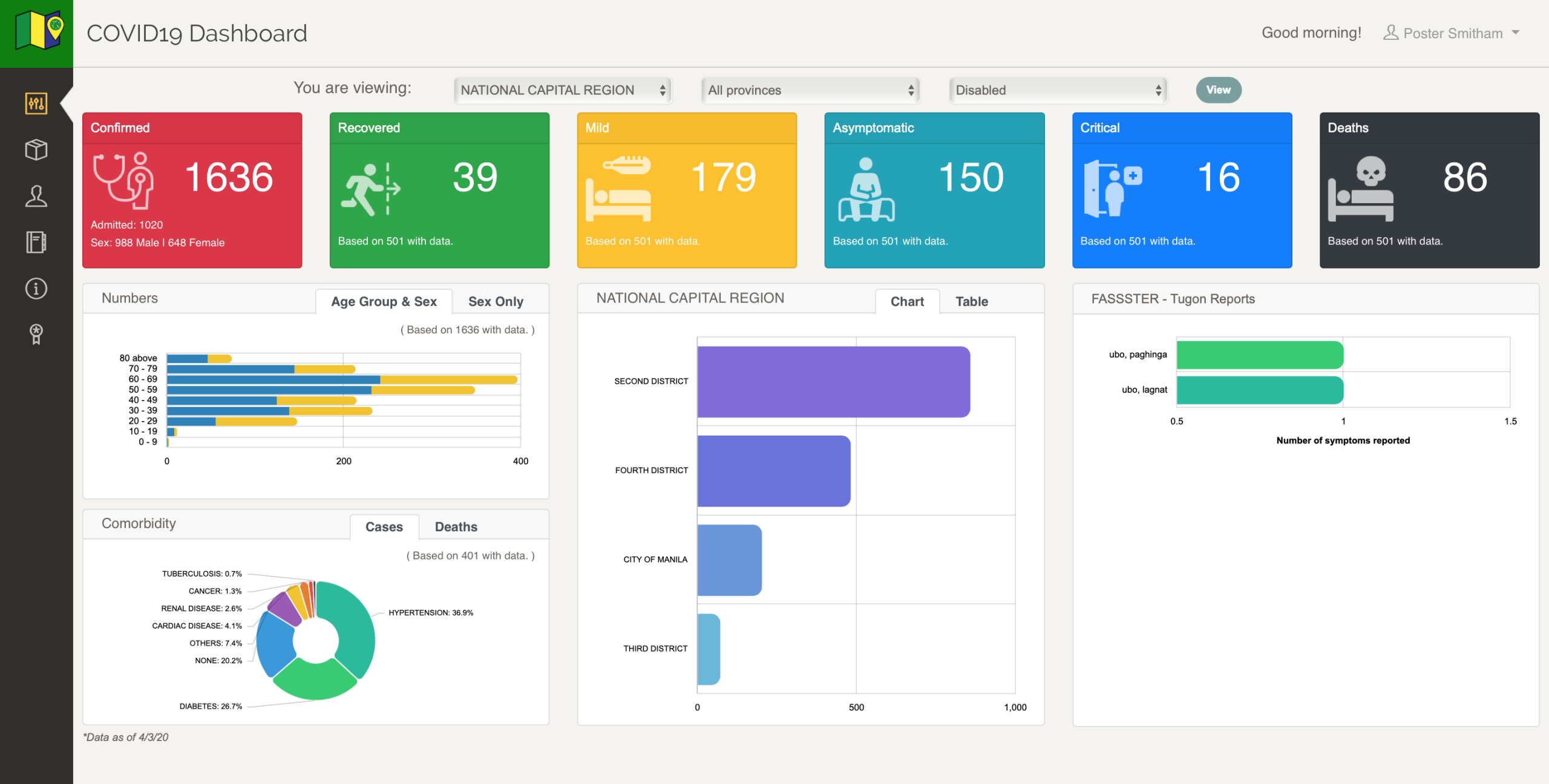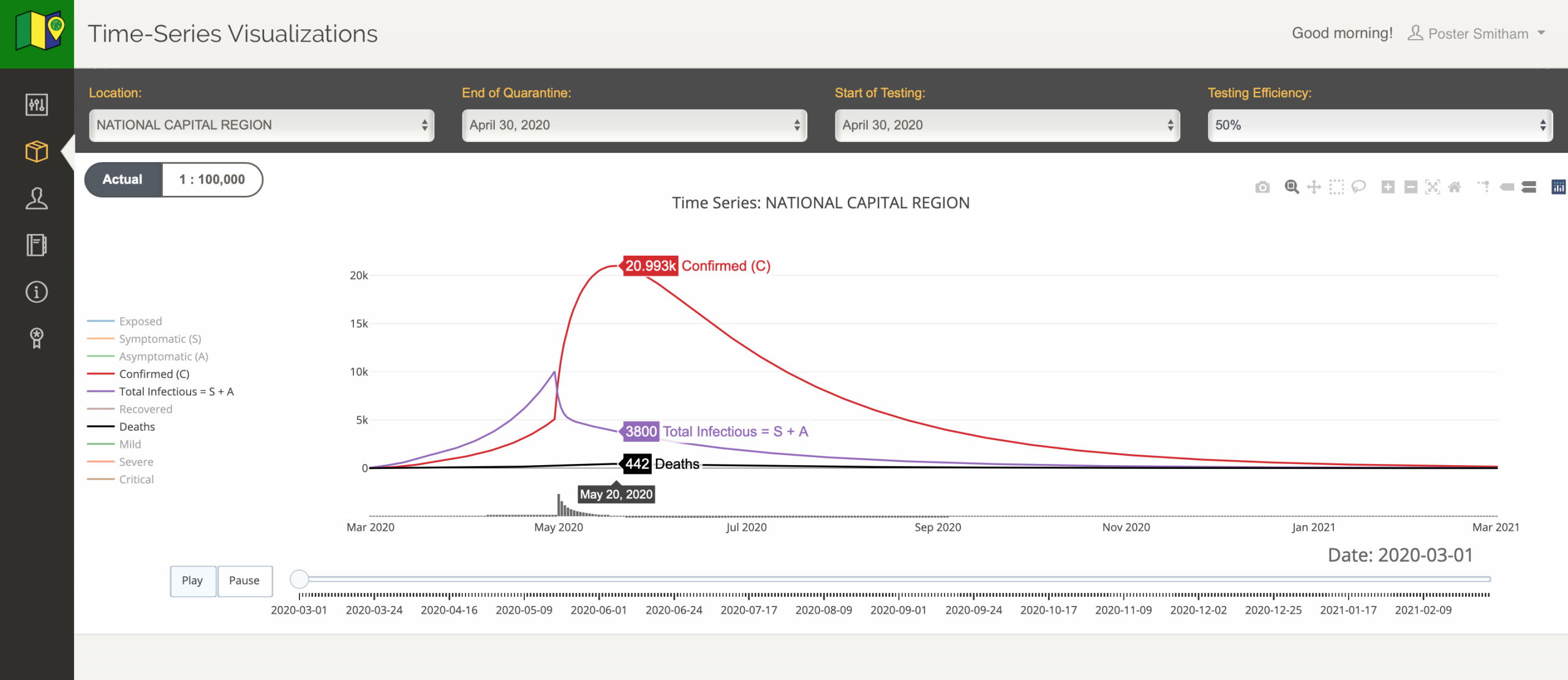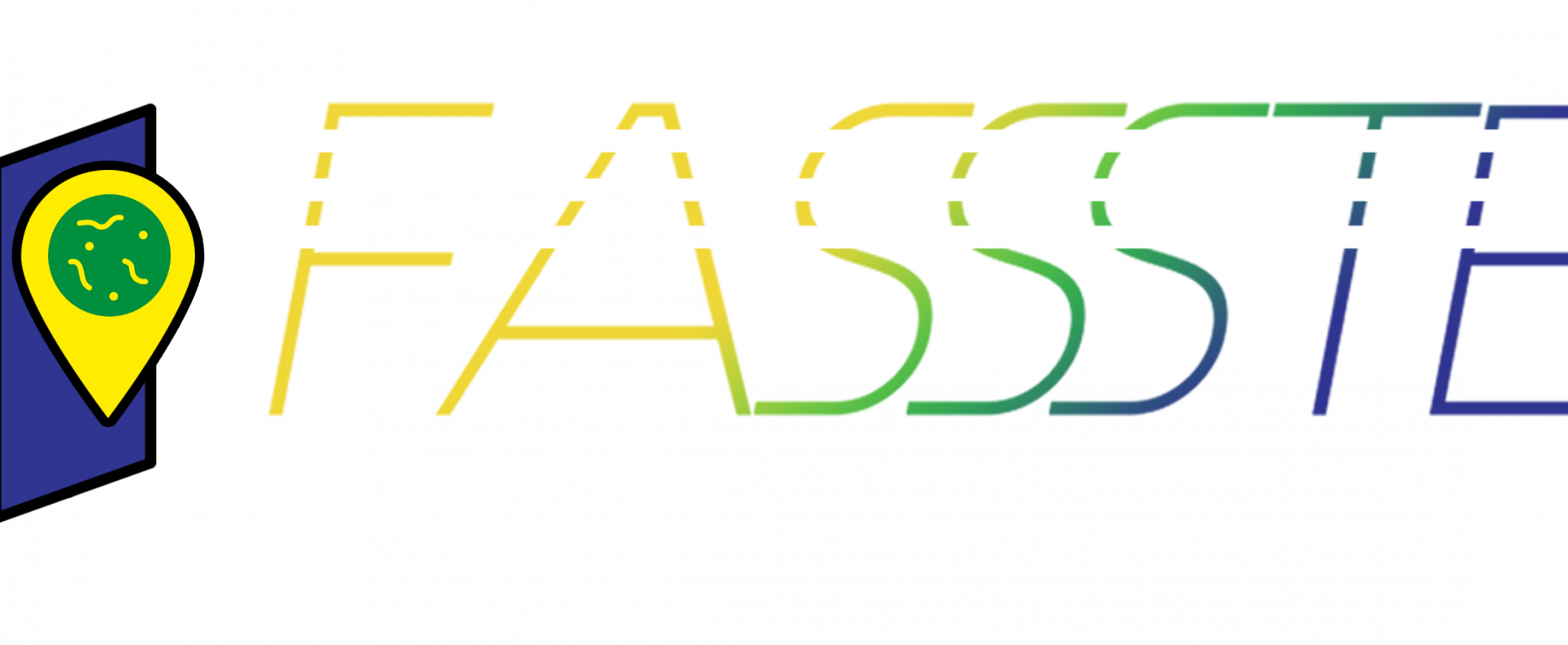 Evidence-based forecasts of possible cases and scenarios on the spread of COVID-19 in the counry can now be accessed thanks to the Feasibility Analysis of Syndromic Surveillance using Spatio-Temporal Epidemiological Modeler or FASSSTER.
Evidence-based forecasts of possible cases and scenarios on the spread of COVID-19 in the counry can now be accessed thanks to the Feasibility Analysis of Syndromic Surveillance using Spatio-Temporal Epidemiological Modeler or FASSSTER.
Developed by Ateneo Center for Computing Competency and Research (ACCCRe) of Ateneo de Manila University in collaboration with the University of the Philippines Manila – National Telehealth Center (UP-NTHC) and the Department of Health-Epidemiology Bureau and funded by the Department of Science and Technology-Philippine Council for Health Research and Development (DOST-PCHRD), FASSSTER is a web-based disease surveillance platform that uses deterministic compartmental modeling.
Data generated from this technology allows policymakers to understand the pandemic at the national, regional, and local levels; assess the effects of the preventive measures in place; and use best practices in specific communities.

When the novel coronavirus or COVID-19 ravaged the country, FASSSTER determined appropriate model parameters that can be used to forecast future numbers of infections, confirmed positive cases, deaths, and recoveries.
FASSSTER dashboard generates disease models that enable users to project the effect of interventions such as community quarantine, social distancing, and optimal testing on the total number of confirmed cases, deaths, and recoveries over time. Data generated from FASSSTER, alongside health capacity and economic models developed by volunteers from Asian Institute of Management (AIM) and the Philippine Institute of Development Studies (PIDS), was used by the Inter-agency Task Force (IATF) in their recommendations and the government’s decision to extend the enhanced community quarantine (ECQ) until April 30.
Another feature of FASSSTER to address COVID-19 is the TanodCOVID, a self-reporting application which enables constituents to report COVID-19 related symptoms to their local health authorities. The data will then feed into the FASSSTER LGU dashboard which serves as a tracker for confirmed cases upon validation of Provincial/City/Municipality Epidemiology Surveillance Units. This will be useful in contact tracing and monitoring identified contacts to ensure that they are appropriately quarantined and managed.
COVID-19 Scenarios
Considering the initial interventions and precautionary measures implemented against COVID-19, FASSSTER estimates the number of confirmed positive cases in the National Capital Region (NCR).
Data gathered enabled the FASSSTER team to generate models to predict the peak number of cases and peak dates in four scenarios. The tool showed that the peak will reach around 2 million confirmed cases on May 30 if no ECQ was implemented. If, however, ECQ is lifted on April 14, with health capacity at 25%, cases will be slightly reduced to 1.5 million on July 31. If the health capacity is increased to 50%, at the same lift date, a huge decline in confirmed cases is predicted, which is now projected to reach 15,000 on May 4. The last scenario showed that cases will drop to 6,800 on May 21 if the ECQ is lifted on April 30, provided that the health system capacity reaches 75%.

The graph shows another scenario which reveals the condition of NCR. If ECQ is lifted on April 30 and health capacity is increased to 50% starting April 30, we expect a peak of confirmed positive cases of 20.9K on May 20. This information can be used by NCR to ensure that our health capacity can accommodate the management of 20.9k confirmed positive cases. Note that confirmed positive cases can further be distributed to critical, severe, and moderate/mild.
Health system capacity can be further explained by two factors: a) testing capacity, or the availability of test kits, testing centers with quantitative polymerase chain reaction (QPCR) machines, trained health workers to perform testing, and turnaround time of test results; and b) health management capacity, or the availability of health facilities, medical devices and health workers to manage the confirmed positive cases so that they are isolated and given proper medical care.
Peak date is the day with the highest number of cases. The projected maximum number of active confirmed positive cases for the duration of the outbreak is referred to as the “Peak of active confirmed cases”.
Peak date is an important factor for epidemiologists in assessing the spread of the virus, an epidemic starts to decline after the peak date. The goal of the government is to “flatten the curve” or to take the necessary preventive measures before hospitals and other healthcare facilities are overburdened with positive cases.
Aside from these data, FASSSTER is also able to project the number of people who will be: exposed, symptomatic and asymptomatic infectious, confirmed positive cases, recovered, deaths, and projected mild, severe and critical cases.
With these projections, the extension of the enhanced community quarantine was approved by the President to provide ample time for the different agencies to strengthen the capacity of the health system against the pandemic.
The initial forecast shows the level of the country’s health systems capacity in containing and managing the infection. It also highlighted the need to increase the number of quarantine facilities, implement stronger healthcare programs and regular assessment of health capacities.
Disease modeling is an iterative process. As data comes in, the model will be updated to reflect the latest projections, where performance can be measured and decisions on planned interventions is driven by science.
FASSSTER may be viewed at https://fassster.ehealth.ph/covid19/.
FAQs:
1. Ano ang ginagawa ng FASSSTER at anong mga datos ang pwedeng makuha rito?
Ang FASSSTER ay isang instrumentong maaaring gamitin sa pagtataya, pagbabantay, at pagtatala ng paglaganap ng COVID-19 sa Pilipinas. Gamit ang FASSSTER maaaring malaman kung gaano karami ang maaaring magkaroon ng COVID-19 sa isang lugar at ano ang epekto at bisa ng mga isinasagawang preventive measures (hal. ECQ, social distancing, testing) sa pagkalat ng sakit.
2. Saan pwedeng i-access ang FASSSTER?
Ang FASSSTER ay maaaring ma-access sa pagbisita sa: https://fassster.ehealth.ph/covid19/. Maaaring pindutin ang “Register” button at hintayin lamang ma-activate ang iyong account.
3. Sino ang pwedeng gumamit ng FASSSTER?
Ang FASSSTER ay maaaring gamitin ng mga LGUs at ng mga tagapamuno nito upang malaman ang kalagayan ng COVID-19 sa kani-kanilang nasasakupan. Maaari itong makatulong sa “contact tracing” ng mga posibleng apektado ng COVID-19.
4. Paano makakatulong ang FASSSTER laban sa COVID-19?
Gamit ang FASSSTER, makikita ng mga tagapamuno ng mga LGU ang mga projections ng COVID-19 na ipinapakita sa website. Ang impormasyong ito ay maaaring gamitin upang mas maging handa ang mga pasilidad at kagamitan kung sakaling makita ang pagtaas ng mga kaso sa nasasakupang munisipalidad o siyudad.
5. Saan kinuha ang mga datos na ginagamit ng FASSSTER?
Ginagamit ng FASSSTER ang mga datos na ibinibigay ng Department of Health – Epidemiology Bureau upang makuha ang mga model parameters na kailangan at upang maberipika ang mga projections nito.
6. Ano ang TanodCOVID application na kasama sa FASSSTER?
Ang TanodCOVID ay isang SMS-based symptom reporting service. Sa pamamagitan ng TanodCOVID, maaari ng i-report ng isang indibidwal ang mga sintomas na kanyang nararamdaman sa kanyang LGU pamamagitan ng isang text lamang.
CONTACT DETAILS:
Written by: Ana Ciaren Itulid
Contributor: Christine Jane Gonzalez






